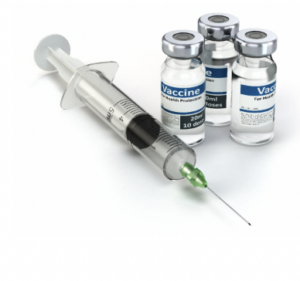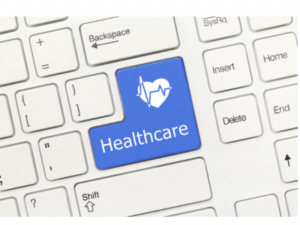- GAO Seeks New Members for Tribal and Indigenous Advisory Council
- VA: Staff Sergeant Fox Suicide Prevention Grant Program Funding Opportunity
- Telehealth Study Recruiting Veterans Now
- USDA Delivers Immediate Relief to Farmers, Ranchers and Rural Communities Impacted by Recent Disasters
- Submit Nominations for Partnership for Quality Measurement (PQM) Committees
- Unleashing Prosperity Through Deregulation of the Medicare Program (Executive Order 14192) - Request for Information
- Dr. Mehmet Oz Shares Vision for CMS
- CMS Refocuses on its Core Mission and Preserving the State-Federal Medicaid Partnership
- Social Factors Help Explain Worse Cardiovascular Health among Adults in Rural Vs. Urban Communities
- Reducing Barriers to Participation in Population-Based Total Cost of Care (PB-TCOC) Models and Supporting Primary and Specialty Care Transformation: Request for Input
- Secretary Kennedy Renews Public Health Emergency Declaration to Address National Opioid Crisis
- Secretary Kennedy Renews Public Health Emergency Declaration to Address National Opioid Crisis
- 2025 Marketplace Integrity and Affordability Proposed Rule
- Rural America Faces Growing Shortage of Eye Surgeons
- Comments Requested on Mobile Crisis Team Services: An Implementation Toolkit Draft
The Federal 340B Drug Pricing Program: What It Is, and Why It’s Facing Legal Challenges
A new report from the Commonwealth Fund explains that the federal 340B Drug Pricing Program was created to allow safety-net hospitals and clinics to purchase outpatient prescription drugs at significant discounts so they could stretch their resources to serve more financially vulnerable patients. But as 340B continues its rapid expansion over the last two decades, the efficacy of the program in reducing patient costs has come into question, and pharmaceutical companies have stepped up their efforts to rein in the program. The document examines the reasons behind the program’s growth, the claims and counterclaims made by drugmakers and healthcare providers, and how federal regulators and Congress are responding.
Court Decision Raises Questions about Insurance Coverage for Preventive Services
A Texas District Court decision is raising questions about whether private insurers will continue to be required to provide PrEP and other preventive services for free. While the plaintiffs argued only against providing free PrEP, their arguments take aim at the constitutionality of the entire Affordable Care Act provision requiring free coverage of preventive services. While the decision will certainly be appealed, its immediate impact on insurance coverage for preventive services is not yet clear.
coverage for preventive services is not yet clear.
U.S. Child Poverty Drops More than 80% Since 1993
The child poverty rate was 27.9% in 1993, but fell to a record low of 5.2% in 2021, according to new census data. The child poverty rate has decreased in every state, and it has fallen by about the same amount for Black kids, White kids, Hispanic kids, Asian kids, immigrants, and kids in one- or two-parent households. “Fewer children growing up in poverty is good for the future,” says Renee Ryberg, a co-author of a new report from Child Trends that digs into the data. “It’s as simple as that.” Lower child poverty rates not only mean immediate improvements to the well-being of kids and families but there are also long-term benefits for society, like lower rates of crime, lower health care costs, and more tax revenue. Pandemic-era expanded government benefits, from stimulus checks to an expanded child tax credit, were major drivers in reducing child poverty in 2020 and 2021. Academics and advocates have raised concerns that some of those additional gains may be erased now that the expanded child tax credit has expired, however, many of the driving factors behind the drop in child poverty—lower unemployment, a rise in single mothers’ participation in the workplace and expansions of the safety net—are longer term.
Look-alikes Now Eligible for Accreditation and PCMH Home Recognition Initiative Support
HRSA posted a new Program Assistance Letter (PAL) focused on its Accreditation and Patient-Centered Medical Home (PCMH) Recognition Initiative. HRSA offers HRSA-funded health centers support for these processes. The most significant update is that this PAL now extends support for PCMH recognition to look-alikes. This support includes certain fees associated with PCMH recognition, initial, renewal, and add-on surveys. The new PAL replaces PAL 2015-02 (published in 2015). Other changes in this PAL align with changes from HRSA partners since that date. For example, the PAL includes current schedules for renewals of accreditation and PCMH recognition.
Important Update About MPX Vaccines in Pennsylvania
The Pennsylvania Department of Health (PA DOH) has revised its prioritization criteria for Monkeypox (MPX) vaccinations and has issued guidance on PEP/PrEP. The guidance documents—Best Practices (Intradermal Injection), Vaccine Provider Sheet, and MPX Vaccination Framework—have been updated and the revised criteria have also been shared with local health departments.
Adult Vaccine Funding: Important Information from Pennsylvania of Health
Section 317 funding, which refers to Section 317 of the Public Health Service Act, which authorizes the federal purchase of vaccines to vaccinate children, adolescents, and adults, has been extremely tight, thus limiting many orders. Per the PA Dept. of Health, the following outlines the status of 317.
- We are currently out of all remaining 317 funds through the end of the current vaccine budget year ending September 30. We have no 317 vaccines available to distribute. Our vaccines budget follows the federal fiscal year which is from October 1 through September 30th. Although 317 funds are extremely limited, we are not experiencing any limitations with our VFC funds nor do we anticipate any issues.
- We will continue to offer all vaccines in the new budget year from October 1 – September 30 but vaccines will continue to be limited. Our 317 funding has been static the last few years, and like everything else, vaccine costs have gone up. With the same overall budget, unfortunately, that means that we have to offer fewer vaccines overall to account for the increased cost. This also means that most likely, funds will run out within the first two weeks of each month.
- We ask that when ordering 317 vaccines, please order the minimum amount needed to get through each month as quantities of everything will be limited. Most 317 vaccines are orderable in 10 doses minimum quantities aside from the following below:
Orderable in 5 dose quantities:
- Heplisav-B (Hep B)
- MenQuadfi (MCV4)
- Menveo (MCV4)
- Adacel (Tdap) – syringes only
Orderable in single dose quantities:
- Td (all brands)
- PPV23 – Pneumovax 23
- Bexsero
- Shingrix (NDC: 58160-0819-12)
- Shingrix will be extremely limited as availability for next year was cut in half due to costs. We will only have 50 doses per month available to distribute amongst all providers. Order limits will continue to be limited to no more than 5 doses. Providers will not be guaranteed to get this vaccine each month. Ordering for this vaccine will be tracked as demand is higher than availability. If an order is filled for one particular provider one month, it may be 2-3 months before another order gets approved again for the same provider.
- Currently, there are no imposed limits on the other vaccines but that could change if warranted.
DOH has been told that extra funds to help with their 317 programs will become available, however, a date has not been determined. Questions regarding 317 can be directed to RA-pavfc@pa.gov
Updated COVID-19 Vaccines Providing Protection Against Omicron Variant Available at No Cost
The Department of Health and Human Services (HHS), through CMS, announced that people with Medicare, Medicaid, Children’s Health Insurance Program coverage, private insurance coverage, or no health coverage can get COVID-19 vaccines, including the updated Moderna and Pfizer-BioNTech COVID-19 vaccines, at no cost, for as long as the federal government continues purchasing and distributing these COVID-19 vaccines. CMS issued four new CPT codes effective Aug. 31, 2022: Code 91312 for Pfizer-BioNTech COVID-19 Vaccine, Bivalent Product; Code 91313 for Moderna COVID-19 Vaccine, Bivalent Product; Code 0124A for Pfizer-BioNTech COVID-19 Vaccine, Bivalent – Administration – Booster Dose; and Code 0134A for Moderna COVID-19 Vaccine, Bivalent – Administration – Booster Dose. Visit the COVID-19 Vaccine Provider Toolkit for more information, and get the most current list of billing codes, payment allowances, and effective dates. See the full news alert.
HRSA Seeks Comments on Draft Telehealth Policy
The Health Resources and Services Administration (HRSA) released a Draft Scope of Project and Telehealth Policy Information Notice (PIN). The agency welcomes feedback by the public comment deadline of Nov. 14. PACHC also welcomes your feedback on the proposal.
Uninsured Rate for Children Fell to 5% in 2021
Nationally, the number of children under age 19 without health insurance fell to 3.9 million in 2021, according to the U.S. Census Bureau’s annual report on health insurance coverage. This is 475,000 fewer children without coverage than in 2020. During the pandemic, Congress introduced measures to increase access to care by reducing the cost of Health Insurance Marketplace coverage and expanding Medicaid in some states. In Pennsylvania, the number of children on CHIP is 134,569 and Medicaid is 1,428,818. The number of children on Medicaid has increased 7.7% over the 20 – 21 reporting period.
A Legislation Introduced to Ban Abortion Nationwide after 15 Weeks
Sen. Lindsey Graham (R-SC) introduced legislation to install a nationwide ban on abortion after 15 weeks. The message from some other GOP legislators on the issue is that they prefer it to be a state decision. Because of the Supreme Court’s recent decision on Roe, abortion currently is a state decision, leading to conflicting state laws which have led to both great variability as well as confusion, both on the part of physicians and other healthcare providers as well as consumers.
